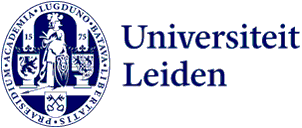
Design METIS instrument for the Extremely Large Telescope finalised
The design for the METIS instrument for the Extremely Large Telescope (ELT) is final. The European Southern Observatory (ESO) has given the green light for production of all parts of the instrument. It is the first ELT instrument, designed and to be built under Dutch leadership, to formally pass the final design review. The instrument should be shipped to the future telescope in northern Chile in 2028.
METIS, short for Mid-infrared ELT Imager and Spectrograph, has a wide range of scientific goals, from investigating the origin history of our solar system to studying the centres of galaxies and the enigmatic supermassive black holes present there. But the scientific priority of METIS is to investigate planet-forming discs and recently emerged and nearby exoplanets.
From describing to realising
The design process is one of the steps from concept to final instrument - a process that takes years for such large, complex and sophisticated instruments. METIS reached its first milestone at its preliminary design review in 2020. Now that the final design phase is complete, the consortium can continue the production phase of all parts of the instrument. The completion of the evaluation marks the exciting transition from describing METIS in technical documents to actually realising the instrument.
‘Largest Dutch optical astronomy project ever'
The METIS consortium is led by the Netherlands Research School for Astronomy (NOVA), with Leiden professor Bernhard Brandl as scientific project leader. Leiden Observatory hosts the METIS project office, and Leiden University will provide a dedicated test facility to assemble, integrate and test the instrument. This will take place between 2025 and 2028. There will also be a visitors' gallery for those interested. Brandl: 'METIS is the largest Dutch ground-based optical astronomy project ever. We are very proud to play such an important role within the ELT project.'
Read more on ESO's website.
About NOVA
The Netherlands Research School for Astronomy (NOVA) is the partnership of the astronomical institutes of the universities of Amsterdam, Groningen, Leiden and Nijmegen. Top research school NOVA's mission is to conduct groundbreaking astronomy research, train young astronomers at the highest international level and share new discoveries with society. The NOVA laboratories specialize in building state-of-the-art optical/infrared and submillimeter instrumentation for the largest telescopes on Earth.
